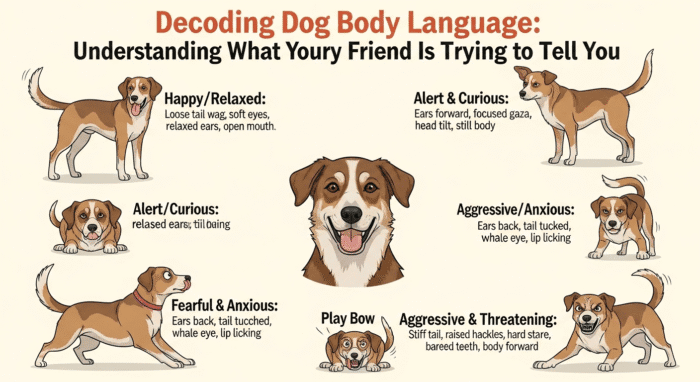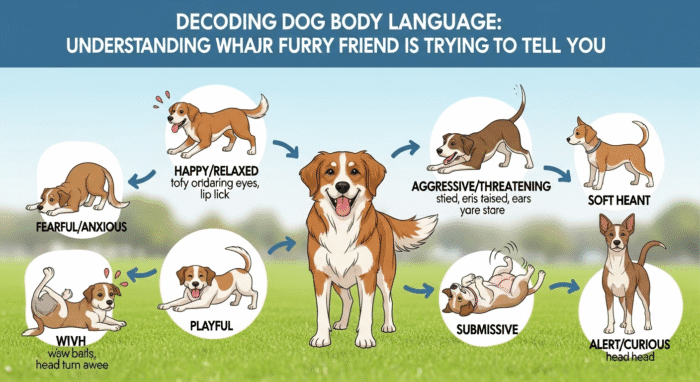Ever feel like your dog’s giving you the silent treatment? Like they’re judging your choice of TV shows, or maybe just plotting to steal your sandwich? Truth is, they’re probably trying to tell you something. The frustrating thing is, it’s not always in words. We gotta learn their language! Decoding dog body language is like unlocking a secret code to a whole new level of understanding with your furry best friend. It’s not just about a wagging tail (though that is usually a good sign!). It’s about the subtle shifts, the ear twitches, the way they hold their mouth…it’s a whole symphony of communication. And trust me, once you start picking up on it, you’ll be amazed at how much they’re saying.
Think about it: dogs communicate primarily through body language. Verbal commands are important, sure, but they often rely on reading our posture, facial expressions, and tone of voice more than the actual words we use. So, it stands to reason that learning their body language opens up a massive communication highway. Ready to hit the road?
Table of Contents
The Tail’s Tale: More Than Just a Wag

Okay, let’s start with the obvious, but often misunderstood, tail. Everyone thinks a wagging tail means a happy dog, right? Not always! While a happy, relaxed dog will often have a loose, wagging tail, the speed and position of the tail are crucial. A high, rapidly wagging tail can indicate excitement, but sometimes it can also signal alertness or even agitation. A low, slow wag can indicate uncertainty or appeasement. And a tucked tail? That’s usually a sign of fear or anxiety. See? It’s nuanced! I remember when I first got my border collie, I thought his furiously wagging tail meant he was always happy. Turns out, sometimes he was just really, really focused on squirrels. He’s always so focused! Another good article is about dog enrichment activities. It’s important that dogs get enough enrichment to keep them happy.
But here’s the thing: context matters. You need to look at the whole picture. Is the dog’s body relaxed? Are their ears forward or back? What’s the situation? All of these factors contribute to the overall message.
Ear-resistible Cues: What Their Ears Are Telling You
Ears are incredibly expressive. Forward ears usually indicate alertness or interest. Pinned-back ears can signal fear, anxiety, or submission. Ears held slightly to the side often mean the dog is relaxed. And constantly twitching ears? Well, that could mean a few things. Maybe they’re hearing something we can’t. Or, they might be a little nervous. The placement and movement of the ears are surprisingly informative. Seriously, spend some time just watching your dog’s ears. You’ll be amazed at what you learn.
And don’t forget the eyes! A direct stare can be a challenge, especially from a dog you don’t know. Soft, relaxed eyes usually indicate a friendly disposition. Whale eye (when you can see the whites of their eyes) often signals discomfort or anxiety. And avoiding eye contact? Could be a sign of fear, submission, or just plain disinterest. Actually, that’s not quite right, it depends on the dog! It could be a sign of something else, as well!
Mouth Matters: Understanding Lip Licks and Yawns
The mouth is another goldmine of information. A relaxed, slightly open mouth usually indicates a happy, comfortable dog. A tight-lipped mouth can signal tension or anxiety. Lip licking, especially when it’s not related to food, is often a sign of stress or appeasement. And what about yawning? While dogs do yawn when they’re tired, they also yawn when they’re stressed or anxious. It’s a calming signal, a way of saying, “Hey, let’s all just chill out, okay?” You know, just like when you yawn in a stressful meeting (or is that just me?).
Also, watch out for teeth displays. Obvious snarling is a clear warning sign, but sometimes a dog will show their teeth more subtly, like a slight curl of the lip. Pay attention! And don’t forget the importance of play bows! That’s when they’re showing you that they want to play. You can read more about dog play on sites like Crazy Games.
Posture Power: Reading Their Overall Body Language
Now, let’s zoom out and look at the overall picture. A relaxed dog will have a loose, wiggly body. A tense dog will be stiff and rigid. A dog trying to make themselves look smaller is likely scared or submissive. A dog trying to make themselves look bigger might be feeling threatened or aggressive. Their overall posture tells a story. Is their weight shifted forward or backward? Are they leaning in or pulling away? Are they standing tall or crouching low? These are all important clues.
And what about those adorable play bows? A lowered front end with a wagging tail is a clear invitation to play! I always love those. I’ve got to admit, this part fascinates me. It’s amazing how much information a dog can convey without saying a single word. Here’s the thing: this is all about observation. The more you pay attention to your dog’s body language, the better you’ll understand what they’re trying to tell you. It takes time and practice, but it’s so worth it. It deepens your bond and helps you respond to their needs more effectively. Which reminds me of this other great resource: Sustainable Dog Ownership. It helps you be a better dog owner, which only helps you understand their body language!
FAQ: Decoding Dog Body Language
How do I know if my dog is stressed?
Stress in dogs can manifest in various ways, some subtle. Look for signs like lip licking, yawning (when not tired), whale eye (showing the whites of their eyes), panting when not hot or exerted, a tucked tail, pinned ears, or a stiff body posture. They might also exhibit displacement behaviors like scratching, sniffing the ground, or shaking off as if wet, even when they’re not. Context is key! If your dog is displaying these signs in a situation that’s likely stressful (like at the vet or around unfamiliar dogs), it’s a good indicator they’re feeling anxious. It’s always good to pay attention to these signs and make adjustments in the environment as much as you can.
Why is my dog suddenly showing his teeth?
A dog showing its teeth is generally a warning sign. It could indicate fear, aggression, or that they feel threatened. It’s important to proceed with caution and avoid direct eye contact or reaching for the dog. Try to identify the trigger that caused the behavior. Sometimes, it’s a simple misunderstanding, like accidentally stepping on their tail. Other times, it could be a more serious issue requiring professional help from a certified dog trainer or behaviorist. Never punish a dog for growling or showing their teeth, as this can suppress the warning signals and lead to biting.
My dog’s tail is wagging, but he seems tense. What does this mean?
As we discussed earlier, a wagging tail doesn’t always equal happiness. A wagging tail combined with a tense body, wide eyes, and a stiff posture can indicate excitement, anxiety, or even aggression. The key is to look at the whole picture. A high, rapidly wagging tail along with a stiff body and forward posture might indicate a dog that’s overstimulated or about to react defensively. It’s crucial to assess the situation and remove the dog from the situation if possible. If they’re tense, remove them from the stressful situation.
How to stop my dog from barking all the time?
Excessive barking can be frustrating, but understanding the underlying cause is crucial. Dogs bark for various reasons: boredom, territoriality, attention-seeking, anxiety, or as a form of communication. Addressing the root cause is the most effective solution. For example, if your dog is barking out of boredom, provide more enrichment activities like puzzle toys, walks, and training sessions. If they’re barking territorially, consider limiting their access to windows or doors. Training techniques like “quiet” command can also be helpful, but consistency is key. If the barking is due to anxiety, consult with a vet or certified dog behaviorist for guidance. Remember, punishment is rarely effective and can often worsen the problem. Find out the source of the issue and fix it.
So, there you have it! Decoding dog body language isn’t an exact science, but with a little practice and observation, you can gain a much deeper understanding of what your furry friend is trying to tell you. It’s about building a stronger connection, a more meaningful relationship, and a whole lot more happy tail wags (the genuine kind!). It’s an ongoing learning process, and I encourage you to keep exploring and learning. Your dog will thank you for it!

